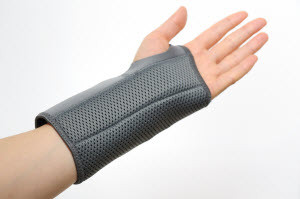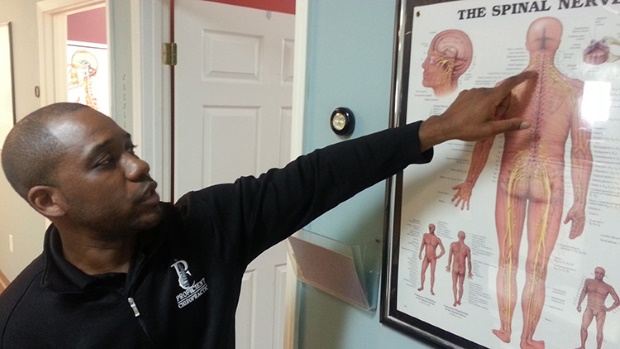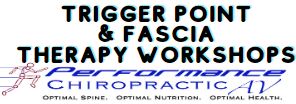
What Is Carpal Tunnel Syndrome?
Carpal Tunnel Syndrome (CTS) is the occupational disease of the 21st century. Do you have it? You may if you have one or more of the following: tingling and numbness in the hand, fingers and wrist; swelling of the fingers; dry palms; blanching (whitening upon pressure) of the hand; or pain so intense that it awakens you at night. In some people CTS causes similar symptoms in the upper arm, elbow, shoulder or neck.1-2
This condition is increasingly common and causing lots of days off from work. Millions of people now suffer from CTS3 and increasing numbers of them are seeking chiropractic care. The drug-free chiropractic approach of releasing stress and freeing your body of subluxations has been a blessing to millions afflicted with this condition.
Where Is The Carpal Tunnel?
You won’t find the carpal tunnel on any map—it’s in your wrist. Your carpal (wrist) bones form a tunnel-like structure—the carpal tunnel—through which pass nine tendons and one nerve—the median nerve. CTS (also called occupational neuritis, partial thenar atrophy and median neuritis) occurs when the median nerve is irritated.
Who Gets CTS?
 Just about anyone can get CTS. Years ago telegraph operators, seamstresses, carpenters and meat cutters
Just about anyone can get CTS. Years ago telegraph operators, seamstresses, carpenters and meat cutters  were the chief sufferers from this condition. Today it’s office workers, computer users, musicians and assembly line workers (among others) who are more prone to it. Fractures, a fall on the hand or poorly designed and/or vibrating hand tools may damage the palm of the hand and also cause CTS. Other causes are rheumatoid or osteoarthritis, Paget’s disease, multiple myeloma, acromegaly and gout. It is often found in pregnant women, women who use birth control pills or individuals with an underactive thyroid.
were the chief sufferers from this condition. Today it’s office workers, computer users, musicians and assembly line workers (among others) who are more prone to it. Fractures, a fall on the hand or poorly designed and/or vibrating hand tools may damage the palm of the hand and also cause CTS. Other causes are rheumatoid or osteoarthritis, Paget’s disease, multiple myeloma, acromegaly and gout. It is often found in pregnant women, women who use birth control pills or individuals with an underactive thyroid.
Thoracic Outlet Syndrome
Thoracic outlet syndrome (TOS) is a similar condition caused by compression or irritation of the nerves that form the brachial plexus (in the upper back) as they exit the neck. The symptoms include pain, weakness and numbness or tingling in the arm.4 Interestingly, some researchers believe that the hips and lower spine (sacroiliac) play a role in the cause while others feel an abnormal thoracic (mid-back) curve is the cause.5
The Orthodox Medical Approach
The medical approach to CTS is to stop using the wrist in the same way by wearing a splint (wrist immobilization). Resting the wrist has worked for many people. In others, ice or drugs such as anti-inflammatories or diuretics were also used.6-7
In those with persistent symptoms, corticosteriods may be injected into the crease in the hand near the wrist which may provide relief. This approach however has a high relapse rate (and many side effects). As many as 500,000 operations a year are performed for CTS8 and recovery from such surgery may take up to several months.9
Limitations of standard medical care led the late Robert Mendelsohn, MD to state: Since the medical treatment for this condition is so often unsatisfactory, I have for years been recommending that my patients consult experts in muscle and joint therapy.10
 The Chiropractic Approach
The Chiropractic Approach
Since most people who do repetitive tasks do not get CTS there appears to be a contributing factor to this condition. In many people the main problem may be the health of the structural system and that is why anyone suffering from CTS should see a chiropractor to ensure that his/her spinal column and structural system are properly aligned and free from nerve pressure.
Look closely at a musician, office worker, computer user or anyone suffering from CTS. You’ll see that not only are the wrists being used to perform the tasks, the neck and entire spinal column are also involved in the activities.11
For over a hundred years clinicians, researchers and patients have reported relief from classic carpal tunnel symptoms and improvement in overall body function after chiropractic adjustments.12-14
How Does Your Spine Affect Carpal Tunnel Syndrome?
Subluxations have been observed in many patients who have carpal tunnel or related hand and wrist problems.15-16 In fact, nerve compression in the neck can block the flow of nutrients to the nerves in the arm, shoulder, wrist and related areas, and make them more susceptible to injury (this is called the double crush syndrome).17-18
Not surprisingly, when 1,000 cases of carpal tunnel syndrome were investigated it was found that a large number of those suffering from CTS also had neck arthritis.19
Conclusion
Anyone suffering from carpal tunnel syndrome should see a chiropractor to ensure that their body is free of subluxations. Chiropractic is not a treatment for carpal tunnel syndrome but is a way of rebalancing the body
and removing structural stress from the nervous system.
A chiropractic adjustment may make the difference. It has for millions of people since its discovery in 1895. Can chiropractic make the difference for you?
To be evaluated at Performance Chiropractic, call us at (661) 942-5000.
References
- Evanoff B, Dale AM, Deych E, Ryan D, Franzblau A. Risk factors for incident carpal tunnel syndrome: results of a prospective cohort study of newly-hired workers. Work. 2012;41 Suppl 1:4450-4452.
2. Verghese J, Galanopoulou AS, Herskovitz S. Autonomic dysfunction in idiopathic carpal tunnel syndrome. Muscle Nerve. 2000;23(8):1209-1213.
3. Bongers FJ, Schellevis FG et al. Carpal tunnel syndrome in general practice (1987 and 2001): incidence and the role of occupational and non-occupational factors. Br J Gen Pract. 2007:36–39.
4. Narakas AO. The role of thoracic outlet syndrome in the double crush syndrome. Annales de Chirurgie de la Main et du Membre Superieur. 1990;9(5):331-340.
5. Liebenson CS. Thoracic outlet syndrome: diagnosis and conservative management. JMPT. 1988;11(6):493-499.
6. O’Gradaigh D, Merry P. Corticosteroid injection for the treatment of carpal tunnel syndrome. Ann Rheum Dis. 2000;59(11):918-919.
7. Pfeffer GB, Gelberman RH. The carpal tunnel syndrome. In NM Hadler (Ed.), Clinical Concepts in Regional Musculoskeletal Illness. Orlando, FL: Grune & Stratton, Inc., 1987;201-215.
8. Levine DW, Simmons BP, Koris MJ et al. A self-administered questionnaire for the assessment of severity of symptoms and functional status in carpal tunnel syndrome. J Bone Joint Surg. 1993:1585-1592.
9. www.webmd.com/pain-management/carpal-tunnel/open-carpal-tunnel-surgery-for-carpal-tunnel-syndrome Retrieved on 8/19/14 from webmd.com.
10. Mendelsohn R. Treating carpal tunnel syndrome. The People’s Doctor. 1982;8(9):7.
11. Ferezy J, Norlin W. Carpal tunnel syndrome: a case report. Chiropractic Technique. Jan/Feb 1989;19-22.
12. Bonebrake AR et al. A treatment for carpal tunnel syndrome: evaluation of objective and subjective measures. JMPT. 1990;13:507-520.
13. Stoddard A. Manual of Osteopathic Practice (2nd ed.). Melbourne, Australia: Hutchinson & Co., 1983:228.
14. Davis PT, Hulbert JR, Kassak KM et al. Comparative efficacy of conservative medical and chiropractic treatments for carpal tunnel syndrome: a randomized clinical trial. JMPT. 1998;21(5):317-326.
15. Upton ARM, McComas AJ. The double crush in nerve entrapment syndromes. Lancet. 1973;2:329.
16. Russell BS. Carpal tunnel syndrome and the “double crush” hypothesis: a review and implications for chiropractic. Chiropractic & Osteopathy. 2008;16(2):1186.
17. Czaplak S. Impaired axoplasmic transport and the double crush syndrome: food for chiropractic thought. Clinical Chiropractic. January 1993;8-9.
18. Nemoto K et al. The double lesion neuropathy: an experimental study and clinical cases. Abstract 123, 2nd. Int’l. Congress. Boston, MA, October 1983.
19. Hurst LC et al. The relationship of the double crush syndrome (an analysis of 1,000 cases of carpal tunnel syndrome). J Hand Surg. 1985;10B:202.




FOLLOW US!